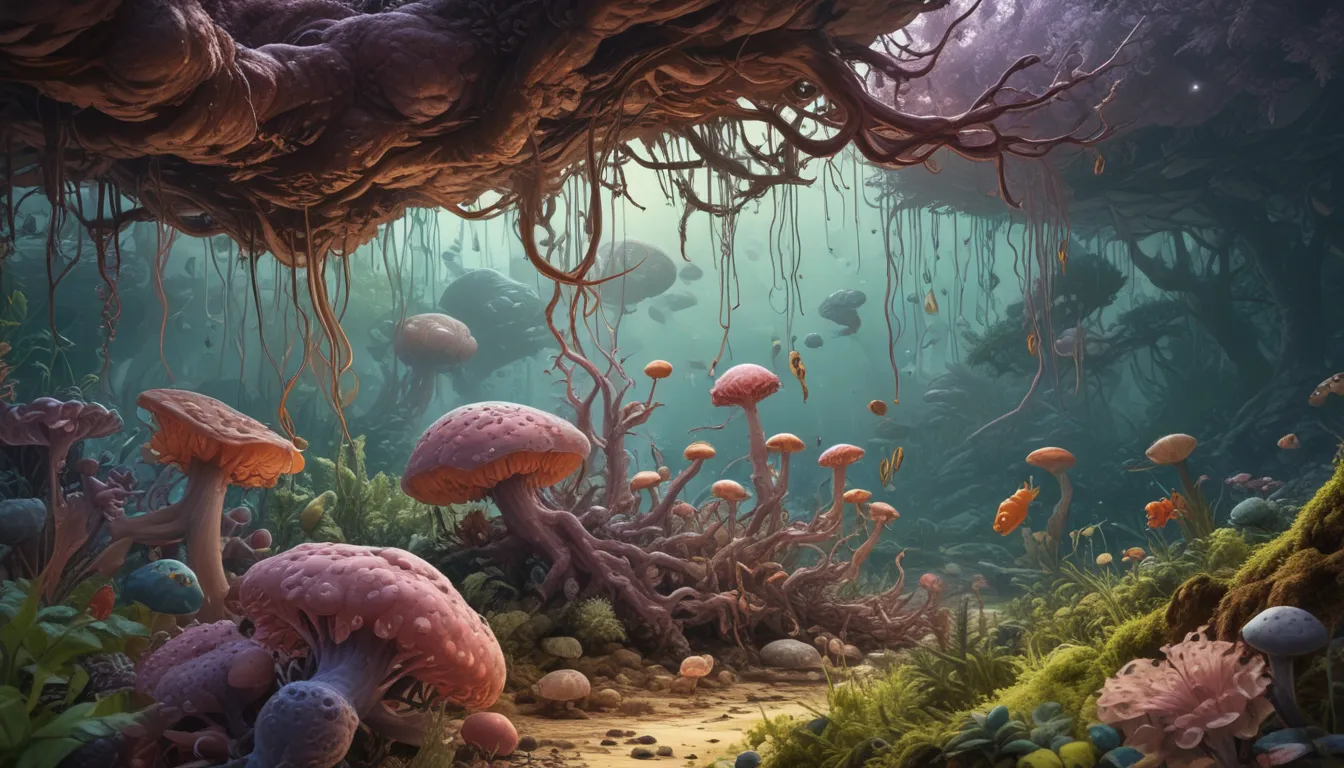A Note About Images: The images used in our articles are for illustration purposes only and may not exactly match the content. They are meant to engage readers, but the text should be relied upon for accurate information.
Microbial symbiosis is an intriguing field of study that delves into the intricate relationships between microorganisms and their hosts. These symbiotic interactions, ranging from mutualistic partnerships to parasitic relationships, play a crucial role in various biological processes. Understanding the dynamics of microbial symbiosis not only illuminates the complexity of nature but also holds immense potential for scientific applications.
In this article, we will take a deep dive into the fascinating world of microbial symbiosis and uncover 11 intriguing facts that highlight the significance of these interconnected relationships. From the symbiotic bond between coral and algae to the mutualistic cooperation between humans and gut bacteria, prepare to be amazed by the complex and often unexpected alliances that exist in the microbial realm.
Microbial Symbiosis Unveiled:
- Microbial symbiosis is a fundamental and widespread phenomenon in nature, benefiting both hosts and microbes alike, from nutrient cycling to disease resistance.
- Symbiotic relationships have the power to influence behavior and provide protection against pathogens, showcasing the intricate and impactful role of microbial partnerships in the natural world.
Exploring the Microbial World:
Microbial symbiosis can be observed in various ecosystems, including the human gut, plant surfaces, and deep-sea hydrothermal vents, highlighting the essential role these relationships play in maintaining ecological balance.
Mutualistic Cooperation:
In mutualistic symbiosis, both the host organism and the microbial symbiont benefit from their association. For instance, certain bacteria residing in plant roots help fix nitrogen from the atmosphere, providing essential nutrients for the plant while receiving a source of energy in return.
Commensal Connections:
Commensalism describes a symbiotic relationship where one organism benefits while the other remains unaffected. In the microbial world, some bacteria hitch a ride on larger organisms, such as human skin, without causing harm or providing any benefit.
Pathogenic Exploitation:
Although most microbial symbioses are beneficial, some pathogens can manipulate these relationships to their advantage, exploiting resources and habitats provided by the host organism, leading to infectious diseases.
Lichen Harmony:
Lichens serve as a classic example of symbiosis, formed through a partnership between fungi and photosynthetic microorganisms. The fungi offer protection, while the photosynthetic partners contribute essential nutrients through photosynthesis.
Nutrient Cycling Assistance:
Microbial symbiosis aids in the cycling of nutrients in ecosystems, including organic matter breakdown, nitrogen fixation, and the recycling of essential elements such as carbon and phosphorus.
Predator Protection:
In some cases, microbial symbionts can provide defense mechanisms for their hosts. For example, bacteria in the intestines of insects produce toxins that deter predators from feeding on the host organism.
Coral Reefs’ Reliance:
Coral reefs rely on a delicate symbiotic relationship between corals and algae known as zooxanthellae. Corals provide a safe environment and nutrients for the algae, while the algae photosynthesize and supply energy to the corals.
Disease Resistance Support:
Certain microbial symbionts play a vital role in defending host organisms against pathogens. For instance, the human gut microbiota strengthens the immune system, protecting against harmful bacteria, viruses, and fungi.
Behavior Influence:
Microbial symbionts can manipulate the behavior of hosts in some cases to enhance their own survival. For instance, bacteria in the intestines of certain animals can produce neurotransmitters affecting the host’s mood and behavior.
Research Continues:
Despite ongoing scientific inquiry, much remains to be discovered about microbial symbiosis. Research efforts aim to unravel the mechanisms and impacts of these symbiotic relationships across various environments and host organisms.
Microbes, despite being invisible to the naked eye, play a crucial role in shaping ecosystem health and function, underscoring their significant influence on the natural world.
Unveiling New Insights:
The captivating world of microbial symbiosis never ceases to amaze scientists, showcasing the intricate relationships shaping ecosystems and the evolution of life forms. From nutrient provision to defense mechanisms, microbial symbiosis exemplifies the power of collaboration in nature.
Understanding the complexities of microbial symbiosis offers new insights into disease prevention, ecological stability, and potential biotechnological advancements. Delving into the microscopic realm reveals the pivotal role of symbiotic relationships in unraveling the mysteries of nature.
FAQs – Unraveling the Microbial World:
- Q: What is microbial symbiosis?
A: Microbial symbiosis refers to the close association between microorganisms and larger organisms, benefiting both parties in the relationship. - Q: Can microbial symbiosis be harmful?
A: While many instances of microbial symbiosis are beneficial or neutral, some relationships can become parasitic, with one organism benefiting at the expense of the other. - Q: How is microbial symbiosis studied?
A: Microbial symbiosis is studied through microbiology techniques, DNA sequencing, and ecological studies to analyze interactions and impacts on ecosystems. - Q: What are the potential applications of studying microbial symbiosis?
A: Studying microbial symbiosis can lead to advancements in agriculture, medicine, and environmental conservation by harnessing the benefits of symbiotic microorganisms.
Conclusion – Embracing Microbial Connections:
As we continue to explore the fascinating world of microbial symbiosis, we uncover the intricate web of relationships that shape ecosystems and support life on Earth. The collaborative efforts between microorganisms and larger organisms exemplify the power of synergy in nature.
Microbial symbiosis holds the key to unlocking new horizons in disease prevention, ecological sustainability, and biotechnological innovation. By recognizing and harnessing the potential of symbiotic relationships, we can unravel the mysteries of nature and pave the way for a harmonious coexistence with the microbial world.
Join us in unraveling the captivating world of microbial interactions, where each discovery opens new doors to understanding and appreciating the interconnectedness of all living organisms. Explore the wonders of mutualism, commensalism, and more as we delve deeper into the remarkable realm of microbial symbiosis.






